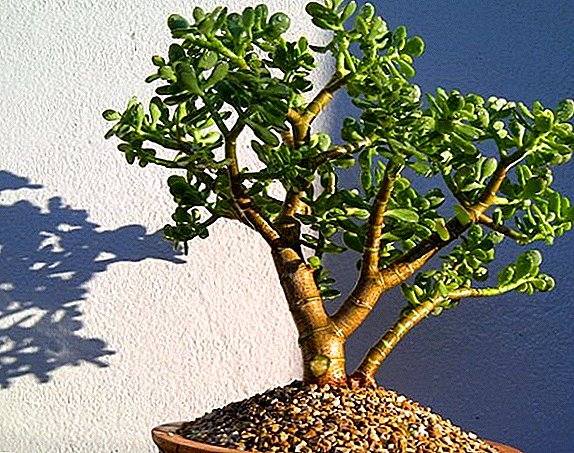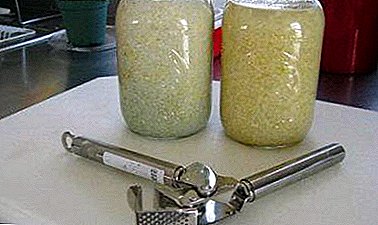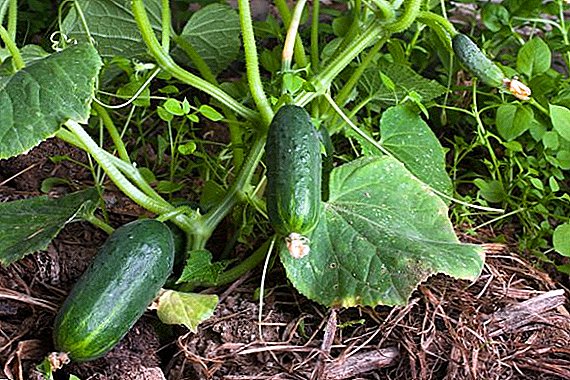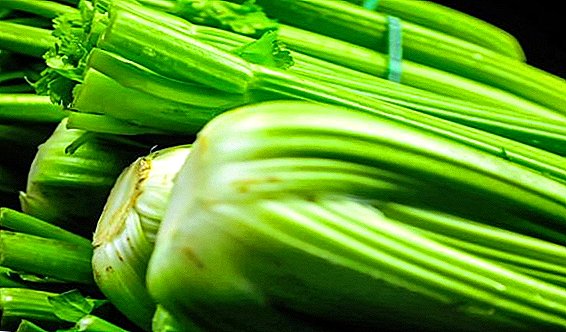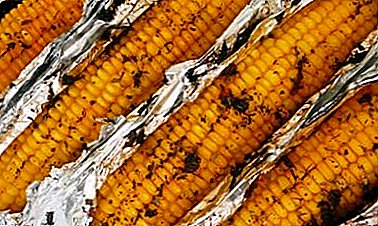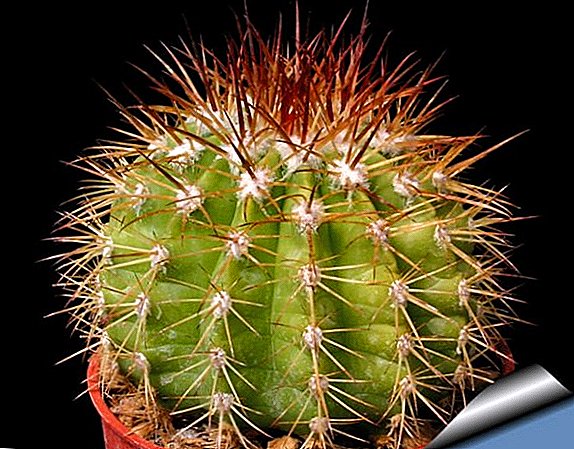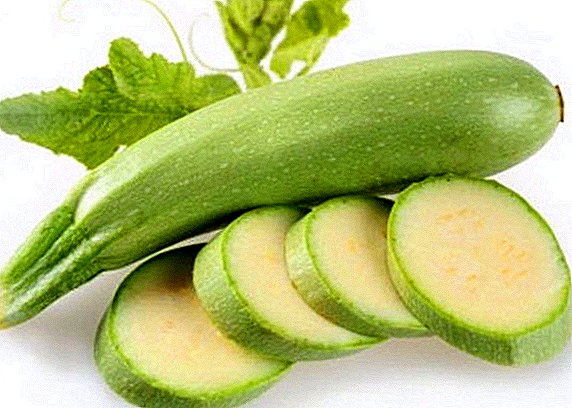 Zucchini are annual herbaceous plants that are grown in many gardens of our country. But only a few know about the benefits of these vegetables for the digestive system, skin, gastrointestinal tract and cardiovascular system. In addition, the pulp and seeds of zucchini are widely used for cosmetic purposes. In this article we will talk in detail about the benefits and harms of this popular vegetable.
Zucchini are annual herbaceous plants that are grown in many gardens of our country. But only a few know about the benefits of these vegetables for the digestive system, skin, gastrointestinal tract and cardiovascular system. In addition, the pulp and seeds of zucchini are widely used for cosmetic purposes. In this article we will talk in detail about the benefits and harms of this popular vegetable.
Calorie and nutritional value
The nutritional value of the plant is 24 kcal per 100 g of product. Zucchini watery, therefore, contains a meager amount of proteins and fats (0.6 g and 0.3 g, respectively). 100 g of the product contains 94 g of watery mass together with dietary fiber, almost all of the remaining mass is simple and complex carbohydrates (4.6 g). 
Vitamins, macro and micronutrients
Zucchini has many beneficial properties due to the presence of organic acids, ash, mono- / disaccharides, saturated fatty acids, vitamins and macro / microelements. Among the vitamins in the composition of this vegetable are vitamins of group B, beta-carotene, vitamin E, ascorbic acid, vitamin PP.
We advise you to learn about the agrotechnical cultivation of zucchini in the garden plot by seedling and seed method, while it is important to know all the rules for planting squash in open ground, having familiarized yourself with the best varieties of zucchini for growing in the summer cottage.
Of the trace elements in the composition of the zucchini there is only iron, macronutrients are presented in a wider range:
- magnesium;
- phosphorus;
- potassium;
- sodium;
- calcium.

What is useful zucchini
This vegetable is very easily absorbed by our body because of the watery composition with a minimum amount of fat. It has a beneficial effect on the intestinal microflora, heals wounds in the gastric mucosa, improves the functioning of the pancreas, and activates the processes of protein digestion.
In addition, squash pulp has a slight diuretic effect, is able to absorb toxins and salts of heavy metals and remove them from the body. Vegetable will be very useful for puffiness, hypertension, obesity, radiation damage to the skin.
Did you know? In Europe, zucchini came in the XVI century, but for a long time grown for decorative purposes because of their bright flowers.
Due to its low calorie content, the product is the main ingredient in many diet programs. A large concentration of phosphorus and calcium will benefit people with weakened bone tissue (especially important in childhood and old age).
The presence of magnesium, potassium and vitamin C in the vegetable pulp helps to strengthen the vascular system and the heart. Magnesium and potassium normalize the work of the heart, lower the level of blood pressure, prevent the development of heart attack and stroke.  Fresh vegetable strengthens the immune system, as it is rich in vitamins C, B1 and B3. It is useful to use with viral and bacterial infections as a natural source of vitamins and minerals.
Fresh vegetable strengthens the immune system, as it is rich in vitamins C, B1 and B3. It is useful to use with viral and bacterial infections as a natural source of vitamins and minerals.
The antioxidant properties of zucchini are manifested due to vitamin E, a natural inhibitor of oxidative processes in cells and tissues. In addition, the components of this fruit have a positive effect on the function of the liver and kidneys.
For women
For many women, maintaining slimness and beauty is extremely important. In this case, zucchini will help you, which helps to improve the condition of the skin, it also normalizes the color and elasticity of the skin of the face. It can be eaten instead of breakfast and dinner in raw form in order to lose weight and enrich the body with useful vitamins and minerals.
This vegetable will also bring great benefits during pregnancy: nutrients will not only maintain the health of the mother, but also help to form the vital organs of the fetus.
For men
The components of the zucchini help minimize the risk of developing cancer of the urogenital system in men. Iron - the only trace element that is part of the squash pulp, but it will bring great benefits to each of the men.  The fact is that it can positively affect the level of testosterone - the main male hormone. But cell sap will help get rid of annoying beer belly.
The fact is that it can positively affect the level of testosterone - the main male hormone. But cell sap will help get rid of annoying beer belly.
Usage features
Even in spite of the fact that zucchini is well absorbed by the body, it cannot be used endlessly, especially if you are expecting a child or have diabetes.
Important! You should not be treated with folk remedies on the basis of the zucchini without prior consultation with an experienced doctor.
During pregnancy
While carrying a child, doctors are allowed to eat this vegetable, moreover, it will bring great benefits in an interesting period. There are no data on the norms of use, just eat moderately and enjoy the pleasant aroma and taste.
During pregnancy in the third trimester, zucchini will help relieve puffiness of the legs and lower the level of pressure, as it has a moderate diuretic effect. Carotene and vitamin C will strengthen the immune system, stabilize the cardiovascular system, and also contribute to the growth and development of the fetus in the womb.  Separately, I would like to note that potassium, magnesium and iron are the main companions of the structure of the vital organs of the fetus: iron participates in the structure of the circulatory and hematopoietic system, potassium and magnesium - in the processes of the brain and heart of the baby.
Separately, I would like to note that potassium, magnesium and iron are the main companions of the structure of the vital organs of the fetus: iron participates in the structure of the circulatory and hematopoietic system, potassium and magnesium - in the processes of the brain and heart of the baby.
Breastfeeding
During lactation, zucchini can be eaten, but not in unlimited amounts, since excessive removal of fluid from the body leads to the loss of potassium and magnesium macronutrients, the main regulators of the work of the heart muscle. Moderate consumption of vegetables will benefit the nursing mother, as many useful vitamins and minerals are directly in the milk, and then in the child's body.
Potassium, calcium, iron and magnesium, which are present in squash pulp, go through all the stages of the chain (zucchini-mom-breast milk-baby) and are actively involved in the growth and development of the baby, namely its bone system, teeth, cardiovascular system, the brain.
In addition, one should not forget that after giving birth a woman’s body begins to experience a deficiency of many useful substances (during pregnancy they were given to the fetus), and a zucchini will help restore the normal level of vitamins and minerals in a woman’s body.
When losing weight
People who aspire to the perfect figure, zucchini is especially useful. Squash pulp is able to clean the intestines from putrefactive decomposition and improve its motility. In addition, this vegetable normalizes the water-salt balance, and this is the main success factor for losing weight.  To effectively lose those extra pounds, you need to eat 400-500 grams of zucchini a day, raw or stewed. These are very small numbers, because a pound of vegetable contains only 115 kcal (9 part of the norm of the average dietary program). Replace dinner and breakfast zucchini - and the effect will not take long.
To effectively lose those extra pounds, you need to eat 400-500 grams of zucchini a day, raw or stewed. These are very small numbers, because a pound of vegetable contains only 115 kcal (9 part of the norm of the average dietary program). Replace dinner and breakfast zucchini - and the effect will not take long.
Vegetables that contain a lot of vitamin C also help to lose weight: green peppers, beets, radishes and its relatives, as well as green onions, garlic, eggplants, tomatoes, pumpkins and celery.
With diabetes
With diabetes, this vegetable can be eaten. However, you should check with the doctor dose, because at different stages of diabetes, the number of daily portions will be different. Whatever it was, zucchini are of great benefit to people suffering from diabetes: they strengthen the walls of blood vessels (the vessels suffer during this disease), do not overload the pancreas (due to the lack of essential oils), enrich the body with B vitamins (useful for pancreas).
With pancreatic pathologies, such a product is best consumed raw or boiled, as the fried pieces of vegetable aggravate the already suffering pancreas.
In case of stomach diseases
When gastritis zucchini pulp is recommended to use only in the form of boiled, as raw products can harm the gastric mucosa, which already suffers from elevated hydrochloric acid. You should not listen to people who claim that a heat-treated vegetable loses its beneficial properties.  Proper preparation (at low temperatures, without the use of spices and seasonings) will leave many vitamins and minerals in vegetables. But remember that during gastritis it is better not to abuse the vegetable and eat no more than 150 grams per day.
Proper preparation (at low temperatures, without the use of spices and seasonings) will leave many vitamins and minerals in vegetables. But remember that during gastritis it is better not to abuse the vegetable and eat no more than 150 grams per day.
When pancreatitis eat zucchini pulp is also necessary only in the form of boiled or baked, and not more than 100 grams per day, so as not to harm your body.
Did you know? The flowers of this plant, roasted in batter, have long been considered a delicacy in Europe and were available only to high-ranking people for impressive amounts of money.
In case of ulcerative lesions of the stomach and duodenum, it is necessary to adhere to a strict diet and use only natural products in boiled or steamed form. Squashes are allowed to include in the menu of people suffering from this disease, as they are able to benefit the stomach and pancreas.
From what age can children
One of the first vegetables in the menu of the child is just the same zucchini, which is easily digested and enriches the body with natural nutrients. Experts recommend cooking gruel from these vegetables for children from six months of age. Sometimes this product is introduced into the children's diet from 4 or 5 months, but this happens only after consulting a doctor (usually with prolonged and painful constipation). 
How to choose when buying
Only high-quality and fresh zucchini can benefit the human body. But in order for such a product to be of high quality, you need to be able to choose it correctly. Below we describe the basic rules of choice when buying.
- Buy a vegetable from the beginning of May to the end of June. It was at this time that the fruits of a pumpkin plant have a rich vitamin and mineral composition, differ in a special taste and aroma. Over-grown vegetables lose a lot of nutrients.
- The rind should be thin and soft, as the thick rind is a witness to an old vegetable. In addition, the dense and thick skin contains many harmful substances.
- Fruits should be small in size (from 10 to 20 cm in length, weighing 200-250 g). Large zucchini has a thick skinned, high content of seeds and poor taste. In addition, large fruits, often overripe and contain a minimum amount of useful substances.
- High-quality vegetables should not be damaged on the peel. Dents and scratches are a witness to the fact that the zucchini succumbed to long transportation and improper storage.
- Try to buy vegetables with a uniform color without stains. Dark spots can signal the ongoing decay processes inside the vegetable.

How and how much can be stored in the refrigerator
Fresh zucchini, which has recently been purchased, can be stored in the refrigerator (at temperatures of 0 ... +5 ° C) for no more than two weeks. To extend the shelf life of vegetables should not be washed, just pack in a plastic bag and send in the refrigerator. Courgettes can be canned, make various salads. In canned form, the product is stored all winter in a dry, dark and cool place.
How to use in cooking
For culinary purposes, zucchini is used in the kitchens of the peoples of the whole world. In India, this vegetable is served with meat and fish, in Italy they make sauce and pasta from it, and in Russia, the well-known dish remains popular - squash caviar.
We recommend you the best recipes zucchini blanks for the winter, also learn how to dry and freeze zucchini at home.
Is it possible to eat raw
Raw fruit pumpkin plants are not allowed to use all. Above, we have already said that with pancreatitis, ulcerative lesions of the stomach and gastritis, zucchini raw in the form of eating is prohibited. Also, do not use this product without heat treatment to people who have allergic reactions to vegetables.  In other cases, a raw zucchini can be eaten, moreover, in this form it will bring great benefit to the body: add vitamins, minerals and other useful substances. You can cook salads, fresh juices and other exotic dishes from raw vegetables.
In other cases, a raw zucchini can be eaten, moreover, in this form it will bring great benefit to the body: add vitamins, minerals and other useful substances. You can cook salads, fresh juices and other exotic dishes from raw vegetables.
What can be done and what is combined
Squashes can be consumed in a fried, boiled, pickled form. They can also be steamed, combined with other vegetables to make stews or vegetable soup. Some people appreciate stuffed zucchini, because they are based on meat soaked in the juice of our magnificent vegetable.
The fruits of these plants are also suitable for making various desserts: pancakes, fritters, casseroles, pies, cakes. Many gourmets appreciate the fragrant and, undoubtedly, the magnificent taste of squash jam, which is prepared on the basis of young pumpkin fruits, citrus fruits, apples and various spices.
Important! In case of critical hypotension (the pressure is always at the level of 90/55), zucchini is better not to eat, since they can lower the pressure level even more and aggravate the situation.
Probably, there are no such products, with whatever squash would not be combined. Because of their tender and fragrant pulp, these vegetables can be served with absolutely any dishes.
How can be used in home cosmetology
As part of the squash there are many useful chemical compounds that have a beneficial effect on the skin. That is why this vegetable is actively used for cosmetic purposes.
Rejuvenating mask
There are two of the most effective anti-aging mask recipes:
- young fruit rubbed on a fine grater, remove the formed juice, and put the gruel in an even layer on the skin of the face. Leave the mask for 20-25 minutes, then rinse with warm water without using detergents;
- grate the young squash and avocado on a fine grater. Mix 3 tbsp. l vegetable and 2 tbsp. l of an exotic fruit, add a tablespoon of honey and a teaspoon of lemon juice to gruel. Stir the contents until a uniform consistency is formed and apply on face for 15 minutes. For a good effect, make such masks 2-3 times a week.

Refreshing
Recipes masks that refresh and rejuvenate the skin of the face:
- chop the third part of a young zucchini grated and add a tablespoon of natural honey to gruel. Apply the contents on the face for 15-20 minutes, then rinse with warm water;
- in 1 tbsp. l zucchini pulp add 1 tsp. sour cream and 1 tsp. honey Apply the mask on the skin for 15 minutes daily before bedtime. The effect will be noticeable after a week of such procedures.
Cleansing
To make a good cleansing face mask, you need to stock up on the following ingredients:
- squash pulp - 50 g;
- cucumber - 50 g;
- agar-agar - 1 g;
- tea tree oil - 3 drops;
- purified water - 200 ml.
To begin, the vegetables must be peeled, and then chop them with a grater. Next, boil water and add agar-agar. When the liquid acquires a thick consistency, it must be added to the vegetable pulp and mix well.
Then add the tea tree oil and mix once more. Apply this mask before going to bed for 15 minutes. Store in the refrigerator for no longer than 3 days. 
Toning and soothing mask
This mask will improve blood circulation in the upper layer of the epidermis. In addition, it will saturate the skin with vitamins and minerals, will give the skin of youth and elasticity. It is very simple to prepare a mask: mix 30 g of squash gruel and 10 g of cottage cheese, then apply on face for 15 minutes. The effect can be assessed a week after the start of the procedure.
Nourishing mask
A nourishing mask helps to minimize pigmentation and restore normal skin elasticity. For its preparation you must have:
- squash pulp - 20 g;
- cocoa powder - 20 g;
- shea butter - 10 g
Did you know? It was the Italians who first thought to use squash pulp for food. Before that, people used exclusively squash seeds.
Vegetable pulp, cocoa and butter mix thoroughly until a homogeneous consistency. Apply on face for 15 minutes, then rinse with water at room temperature.
Against acne
This mask is recommended to do once a week. It will get rid of acne and annoying purulent formations on the skin. Ingredients Required:
- squash pulp - 20 g;
- rye flour - 10 g;
- chamomile oil - 6 drops.
 Pulp, rye flour and butter mix until a homogeneous consistency. If necessary, add a little mineral water and apply on the skin for 10 minutes.
Pulp, rye flour and butter mix until a homogeneous consistency. If necessary, add a little mineral water and apply on the skin for 10 minutes.Against rough skin on heels
Sometimes the skin on the heels begins to become rough and cracked, in such cases a mask from a zucchini will come to the rescue. For its preparation it is necessary to have the following ingredients:
- squash gruel;
- fruit puree (apple, orange, avocado);
- olive oil.
The listed ingredients are mixed in a ratio of 2: 2: 1 relative to the order in the list. The resulting mask is applied on the heels and secure with a gauze bandage.To do such procedures daily until complete rejuvenation of the skin of the heels.
Contraindications and harm
Zucchini in raw form is forbidden to use without prior consultation with a doctor for any pathologies of the gastrointestinal tract.
Important! Squash juice and pulp is not recommended to use on an empty stomach, as there is a huge risk of diarrhea due to the laxative properties of this vegetable.
It is also not recommended for people suffering from a violation of excretion of potassium from the body. In addition, you should follow the rules when using the juice of this vegetable: if you drink more than 1 l per day, then a violation of water-salt metabolism is possible.
You should also use caution zucchini with diabetes. People with a similar pathology is best to eat vegetables in boiled form. When cholecystitis and urolithiasis zucchini can be used only after prior consultation with a specialist.  No cases of vegetable poisoning have been recorded (if the product is high-quality and fresh, a putrefactive or spoiled vegetable can provoke food poisoning).
No cases of vegetable poisoning have been recorded (if the product is high-quality and fresh, a putrefactive or spoiled vegetable can provoke food poisoning).
Read about the beneficial properties of zucchini zucchini, as well as varieties and intricacies of growing this vegetable.
Now you know what the benefits of zucchini for the human body. Finally, I would like to say that zucchini is best grown on its own, so you will be confident in the quality and benefits of products.



